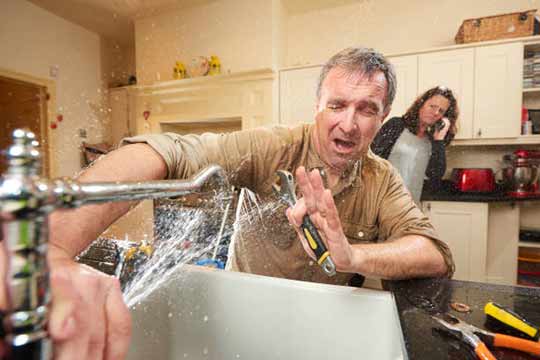
Most times, the plumbing in your house will work as it should. But sometimes, your home’s network of water pipes and plumbing fixtures will give you problems. When this happens, you want those problems to be small things you can handle yourself; there is no need to call an emergency plumber. Some major plumbing hazards to avoid are listed below.
Solving some of the issues with your home’s plumbing is a great way to reduce the impact of plumbing emergencies on your household. It will also let you lower the home’s maintenance cost. Property and homeowners who know how to fix problems in their house do an overall better job of maintaining their property, says DeSantis Property Management.
But this is only true if, as a DIY homeowner, you are also conscious of the risks associated with working with the home’s plumbing. Unlike when working with the electrical systems in the house, homeowners do not typically think of hazards when working with their home’s plumbing systems.
But hazards exist when working with your plumbing and are not just limited to the risk of property damage. Some dangers can result in bodily harm or even death when solving plumbing problems. What hazards do you need to be aware of when doing plumbing repairs in your home?
8 major plumbing hazards to watch out for
-
Slips and trips
Fixing plumbing issues often involves working on bare wet floors that are slippery. This increases the risk of injuries that result from slipping and falling. Remove any water on the floor before you start work (if possible) to minimize the danger. Using rubber-soled shoes is highly recommended, and your work area should be sufficiently lit. Lastly, using the proper Personal Protective Equipment (PPE) and learning how to fall safely is helpful.
-
Falls from heights
Part of your home’s plumbing system will often pass through areas of the house that are out of reach, so using ladders is an inevitable part of plumbing repairs. Setting up the ladder on an uneven surface, overreaching while standing on the ladder, and letting yourself get distracted are common reasons for falls. Since most falls involve landing on a hard surface, the resulting injuries are often severe. Proper ladder safety is essential when using ladders.
-
Exposure to hazardous chemicals
When working with their home’s plumbing, two dangerous chemicals homeowners get exposed to are lead and asbestos. Asbestos is a major ingredient in the materials found in houses built before the 1970s. Lead may be found in old paints and piping. The risk of inhaling these chemicals is higher when working in older homes. That risk can be mitigated by wearing the right PPE, breathing masks, eye goggles, gloves, and clothes.
-
Risk of electric shock and electrocution
There is a chance that homeowners will suffer electric shocks when working their home’s plumbing. This is partly because some home plumbing fixtures run on electricity. It is also because water from burst pipe emergencies can get into electrical circuits and short-circuit them. A homeowner who is unaware of that breach may touch the water and get electrocuted. If there is a risk of electrocution, it is best to switch off the power from the mains before trying to fix a plumbing issue.
-
Exposure to mold
Mold spores and toxic gases emitted by mold are responsible for various respiratory illnesses and other serious ailments. Homeowners may come into direct contact with mold when working with the plumbing. This is because mold likes to grow in warm, dark, and moist places, such as is often found where there is a water leak. Wearing a respiratory mask, gloves, goggles, long pants, and long sleeves will protect you against this hazard.
-
Dangers of working in confined spaces
Working in a confined space has two major issues: breathing difficulties and muscle cramps or tension. Oxygen levels are usually very low when working with storage tanks or ductwork. Inadequate oxygen can cause disorientation and make you prone to mistakes. Muscle tension in these environments also increases the risk of falls and injuries.
-
Injuries from hand tools
Fixing problems with the home’s plumbing may entail using power tools and sharp objects. One small mistake with a drill or saw can lead to significant injuries. Common injuries caused by hand tools during a plumbing job include cuts, fractures, and broken bones. These can easily be avoided by following the safety guidelines for using the tools and using the right PPE.
-
Injuries from extreme temperatures
This can happen while working with frozen pipes, in hot confined spaces with limited airflow, or with the water heater. Burns from accidentally touching a hot pipe is one of the most common plumbing injuries. Frostbite also results from being in contact with frozen pipes for long periods. Being aware of the dangers and taking steps to protect yourself is the best way to avoid these injuries.

